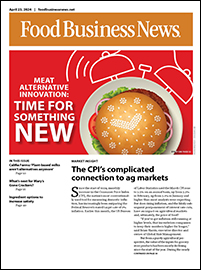WASHINGTON — Foodservice operations are projected to generate $1.5 trillion in sales in 2025, according to the National Restaurant Association (NRA).
The record-setting sales forecast comes from the association’s recent State of the Restaurant Industry report, an annual publication that examines restaurant operator and consumer survey data to find upcoming trends in the industry.
“The fundamentals of the restaurant industry are strong, and operators are optimistic about the year ahead,” said Michelle Korsmo, president and chief executive officer of the NRA. “Industry sales are expected to grow more than 4% this year, and employment should reach nearly 16 million jobs. That growth will come from restaurant operators finding the balance of value and experience for consumers, and innovating breakthrough efficiency in their operations.”
The NRA found over 80% of operators believe their sales will either remain the same as 2024 levels or be higher in 2025, though restauranteurs anticipate an increase in competitive pressures this year. Consumer desire for in-person dining and food delivery is one element driving the optimism in sales growth. The association report found that consumers indicate high levels of demand for restaurant meals if they are able to afford it, with 81% of respondents saying they would engage in on-premises dining at table-service restaurants more frequently if they have more money and 82% would have food delivered to their home more frequently.
The industry also is expected to create 200,000 new jobs, on par with jobs created in 2024 and in line with the sustained growth projection of 150,000 new annual jobs through 2032.
Investments in technological improvements will continue to be a focal point for operators, with over 60% of respondents indicating that they plan to invest in front-of-house equipment or technology such as kiosks and menu boards in quick service and tables or reservation technology in table service. Additionally, 57% of operators said they plan to invest in back-of-house technologies.
“Back of the house is actually in some ways more important than the investments in the front, because a lot of these administrative financial systems integrated with the cooking systems really do make the operation much more seamless and efficient,” said Hudson Riehle, senior vice president of the research and knowledge group at the NRA, in a webinar on Feb. 11.
In 2025, the NRA sees consumers’ definition of value expanding beyond simply price to include factors such as experience, hospitality and affordability. Welcoming environments and opportunities to socialize will be key, according to the association, and loyalty programs will be an important method to help deliver affordability and value.
“Obviously in higher inflationary times, consumers look for a value proposition,” Riehle said. “One way that operators are doing this now, because of the technology and the social media and apps that are in place, is that they can promote different menu items and price points in real time. So, in terms of generating additional incremental demand and shifting demand, it is now possible to offer value propositions in real time, and this is a new frontier for the industry and will only become more important in the decade ahead.”
Operators anticipate increased input costs and employment challenges will continue to be some of the largest hurdles for the upcoming year. Navigating changes to dayparts and disruptions caused by snacking will be additionally important, Riehle said.
“Most importantly, from an operator perspective, is what's going on with the traffic changes by daypart,” he said. “It's primarily breakfast and snacking, which has been the beneficiary of this (increase in) traffic share … and when we ask consumers, why is snacking growing so substantially, what you see is a preference, particularly among the Gen Z and millennials, to replace traditional meal periods with snack items.
“For all adults, it’s roughly about two thirds, but it is substantially higher for those younger age groups, and this drives home a very important point for the restaurant industry.”



